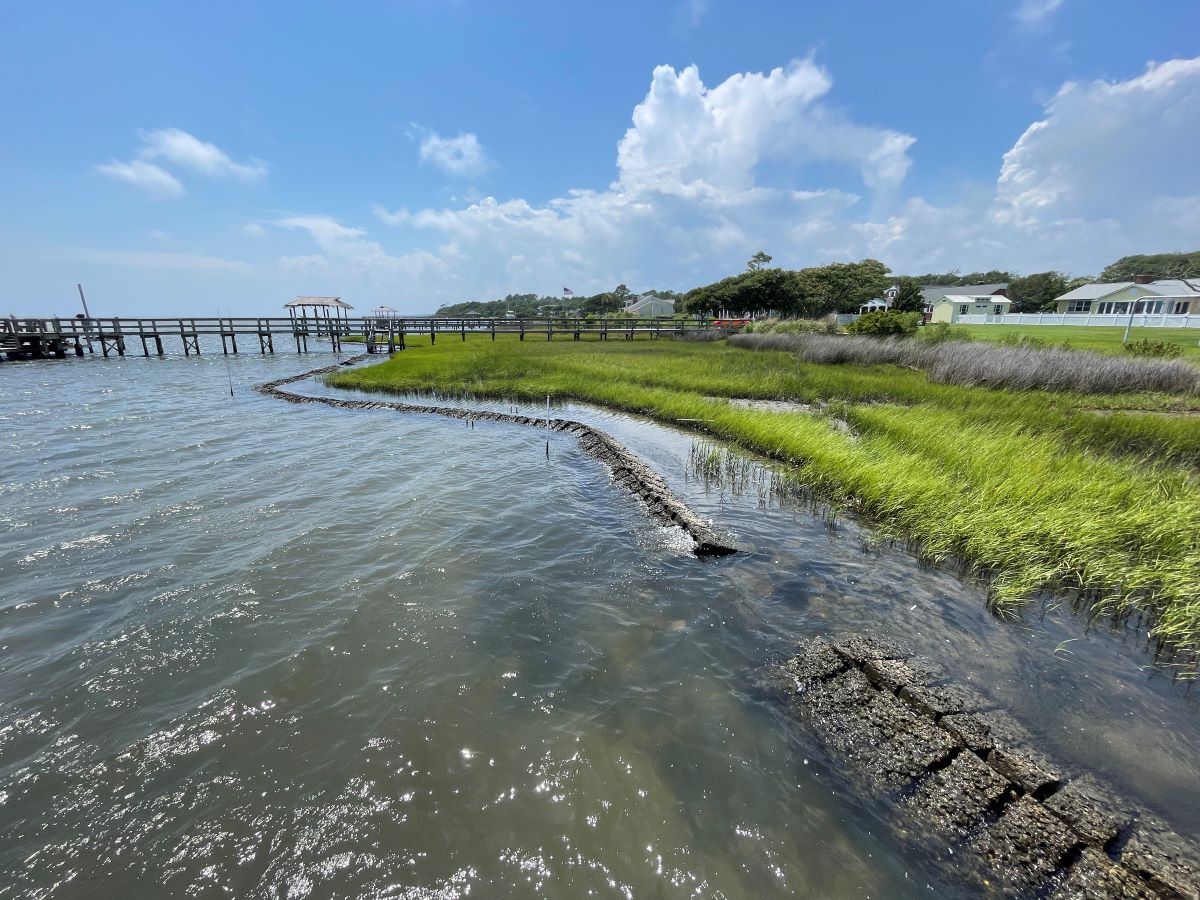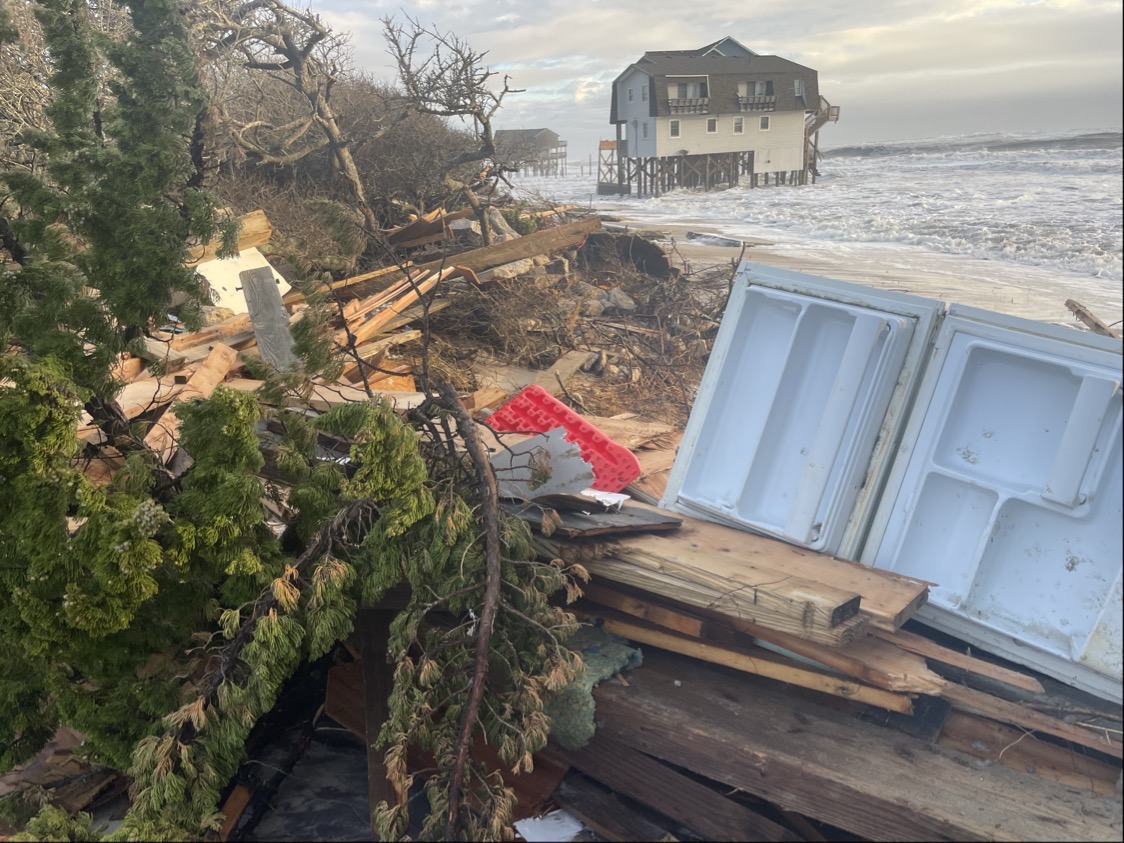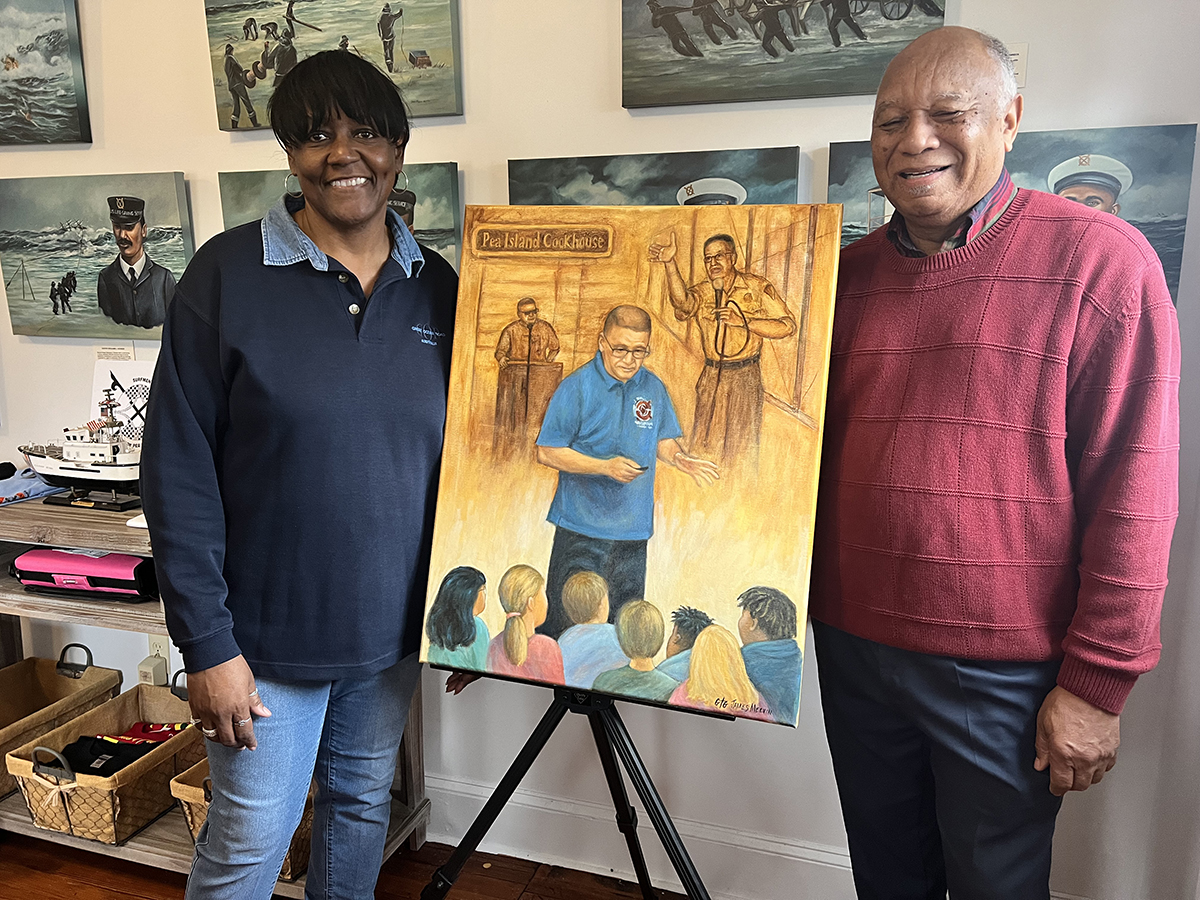
A team of educators and scientists is combining efforts to build a program that makes small-scale living shorelines a practical option for waterfront property owners.
The N.C. Living Shoreline Academy held its first introductory course last fall at Carteret Community College in Morehead City and is getting ready to offer it again, along with the new structure and design course.
Supporter Spotlight
The introductory course is scheduled for 2-5 p.m. March 27, where attendees can learn about living shoreline concepts, construction and permitting processes, existing natural shoreline stabilization techniques, and different types of living shoreline projects.
A four-week structure and design course will follow and be held from 2 to 5 p.m. each Wednesday in April. This course offers a step-by-step approach on design, construction materials, and addressing vulnerabilities, as well as guide students on designing effective, research-based living shoreline solutions for private property projects.
Tuition for each course is $35 and there are some seats open for both. Register online or contact Lauren Daniel at Lauren8421@carteret.edu to get more information on the program.
The college’s Maritime Programs Coordinator Scott Leahy and Dr. Rachel Gittman, an assistant professor at East Carolina University, are co-principal investigators for the program that was awarded a $460,186 grant in 2023 through National Sea Grant College Program’s work with the U.S. Coastal Research Program.
In addition to the college and ECU, partners in developing the program are North Carolina Sea Grant, the North Carolina Coastal Reserve, and the North Carolina Coastal Federation, which publishes Coastal Review.
Supporter Spotlight
Gittman, who has been working with different organizations on living shorelines for about a decade, said that while there are a lot of definitions out there of what a living shoreline is, she tends to view a living shoreline as one that has native living components incorporated into the design and that maintains the land-to-sea continuum, or not interrupting the transition between the land and the sea with a wall or other type of hard barrier.
“That’s the real key for me, that the land-to-sea transition is maintained,” she said.
Research shows that this green infrastructure technique, which is a natural alternative to riprap or bulkheads, sustains less damage during storms, is more environmentally friendly with a lower carbon footprint, and there’s life within the structure, Leahy said.
By comparison, a bulkhead wouldn’t have much growth or increase biodiversity, he added, “Whereas it’s been shown through research that if you put an offshore sill, it will increase the biodiversity within the scope of your project.”
He said that the idea for the Living Shoreline Academy was planted during a conversation with Lauren Daniel, who is developing the program, while she was attending one of his other courses. They discussed “how great” it would be to have a class on how to build living shorelines on private property.
Gittman explained she was at the college working on a different proposal with the aquaculture program when she learned there was interest in developing the living shoreline program.
They submitted a grant proposal for the new program through National Sea Grant and the U.S. Coastal Research Program.
One of the grant requirements is to translate the ample research by other institutions on living shorelines into practical application for property owners and contractors who would be interested in building small-scale living shorelines.
“We proposed that we would take a lot of the research that’s been done over the last decade or so, really more than that, and try to integrate it into — not just your intro to living shorelines — but a more in-depth, module-based course,” Gittman said.
“Our goal is to read through the research and be able to present it to folks,” who want living shorelines, Leahy said, adding the courses are being geared toward property owners and marine contractors.
The academy is focusing on projects around 100 feet or less, which would fall under the general Coastal Area Management Act, or CAMA, permitting in North Carolina, Leahy said.
“We are not training people to do the really large projects,” Gittman explained. “We’re really focused on helping typical homeowners with backyard-type living shorelines that would fall under the state’s general permitting program because that’s where most of the projects are, and where I think there’s the most opportunity for growth in the living shoreline market is to do these smaller, private property living shorelines.”
The first session being held Wednesday is designed to expand on what a living shoreline is, its purpose, benefits and drawbacks, Leahy said.
The structures and design course takes a deeper dive into the different types of living shorelines, available materials and products, and what would work best for different types of shorelines.
For example, if you’re in an area with high wave energy, you don’t want to use oyster bags because they’ll get destroyed. “That would not be the best method there for your goals,” he said. “We’re trying to match the materials with your location.”
Participants will learn the basics on how to understand and apply for a CAMA permit, too.
“So, you think about it, then you design it. You get a permit and then you build it,” he said. “This class is all about that design, how you make it.”
Leahy said the academy’s first class was held in the fall and that was just the intro class.
Gittman said they had a full range attend the intro course last fall, including property owners who have shoreline issues and wanted to know about their options, and marine contractors who had been doing mostly bulkheads and wanted to diversify what they offer.
This spring, they’ve added the structures and design course and, in the fall, these two classes will be held and a vegetative component will be added, Leahy continued.
“We’re going to work with our horticulture department here on campus, we’re growing marsh grasses,” he said. “We’re going to discuss the different types of Spartina grass, we’re going to propagate the grass products, potentially planting some in a sample site, and then we’re going to be focusing on the upland plants that go into supporting healthy shoreline.”
Then, there are plans to add a logistics course and a live project. Once those are in place, when a student completes the academy, they’ll earn certification.
Leahy said the ultimate goal is for a contractor to be able to present their certification to potential clients to show they’re knowledgeable and have been trained, or so a homeowner will be better equipped to build their own following CAMA guidelines.
He’s hoping that as more people install living shorelines, these projects can become more affordable.
“I think there’s definitely interest there and learning what other options are out there,” Gittman said, adding that these smaller projects are important because they do add up.
“There is evidence from the research that we’ve done and others have done in other states that it is kind of like a domino effect. Whatever your neighbor chooses to do, tends to influence what you do. And so, if we can get whole communities to kind of buy into this idea that there’s opportunities beyond just building a bulkhead to prevent erosion of your shoreline,” she said. “The more seeds we can plant in the community, I think the more advocacy we’ll have from residents.”
The Coastal Federation’s Coastal Resiliency Manager Sarah S. Bodin said that the academy “is a wonderful hands-on training tool” for homeowners, contractors, and laborers who wan to increase their education and skills in the design, permitting and implementation of living shorelines.
“Living Shorelines are a vital nature-based technique in the preservation and restoration of coastal wetlands, especially in light of sea level rise, increase in storm events, and where migration corridors are limited,” Bodin continued. “Living Shorelines have been around for more than 25 years, yet their use is not the norm. This course will help to address the knowledge gap between the public and these tried and true nature-based techniques.”







